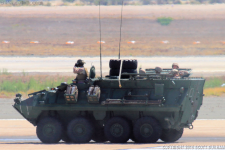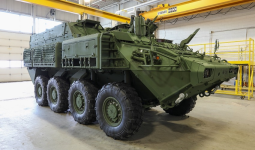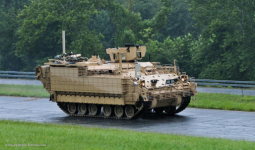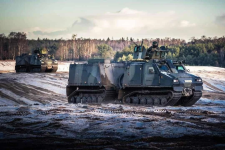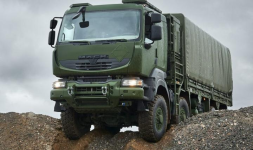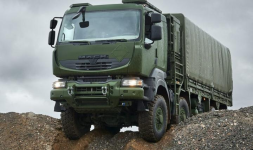I tend to agree. The smaller sections / squads of the Swedes or Dutch work because the vehicle is organic to them. The Swedes also expect to fight from the hatches which is weird but hey. You get to a point though where you can support your weapon systems anymore. In a squad or section I’d posit you need to have some kind of automatic weapon (ie an MG) and some AT / HE projection. You probably also need some one in charge. So right there we have at a minimum 3 people assuming both those weapons are single operator. Next you’re going to need to protect and support those weapon systems. It rapidly adds up to a minimum of six people.
Early days in Ukraine saw the Russian VDV suffer heavily with their very small squads lacking mass to support mechanized pushes and clear out dead ground. A VDV squad was five dismounts, and their companies would have less than 50 on the ground. You can’t simply keep calling in new companies to make up a full one without understanding the logistics get more and more demanding.
Would it work to have assault companies having a different squad size/makeup and the follow up companies larger sections for holding/defensive work. The Assault company is used for assaults and as a mobile reserve? Basically tailoring their structure, weapons and possibly training to different tasks?
What’s an assault company? How does that fit into our doctrine?
...
Point taken on the employment in an active environment. But given our circumstances,
our your numbers in particular, large sections or small sections are probably not going to make much of a difference. The transition from Garrison to Peace Support Ops is already cumbersome as you try to prevent it being bloody. The transition to War from either stance is likely to be bloody regardless of doctrine and support.
Currently, in my opinion, the Canadian Army is a Garrison Army that has experience in Peace Support Operations. Doctrinally they are prepared to fight a war. But is the war they are likely to encounter commensurate with their established doctrine?
Is the structure sufficiently strong, and sufficiently flexible, to build the Central Nervous System of Command and Control (through training) in Garrison, to be able to deploy rapidly on Peace Support Operations, AND to rapidly bulk up to fight a war?
If you go into a war with large sections of long-service personnel you recreate the problems of the BEF and the Old Contemptibles - some of the world's best soldiers of the day performed admirably for about 2 months until they were worn down and forced back on their heels. The survivors shaped the following armies but in the field their positions were taken by new armies - first the Territorials of Loos, then the Volunteers of the Somme and finally the Conscripts of the 100 days.
...
I'm inclined to think the critical bits are the Central Nervous System and the long service soldiers. I think the Garrison structure should focus on the Central Nervous System and ensuring that all the C2 nodes, all the way down to the section level, are covered off. That means, to me, a battalion fitted for, not with.
It means a small number of highly skilled operators distributed across that CNS. The battalion would not be fit for operations. It would have to be bulked up by adding a bunch of load carriers to support the skilled operators. The load carriers would supply the depth on operations while enhancing their existing knowledge base (whatever that might be) with OJT.
Some portion of the Army would be bulked up sufficiently to conduct PSOs and a QRF of sorts....
But going to war? Do you really want to put all of your peacetime army at risk on the first day of operations? Calgary Highlanders birthday is St Juliens Day. At Valcartier the battalion had an authorized strength of 1511 all ranks that by the time they were fielded in France had been whittled down to a 4 company establishment of 1124 all ranks. On 22 April the unit strength in the sector was 1022 when 816 of them were formed up for a Russian style meat wave attack on entrenched German positions in Kitchener's Wood. The next morning, after the battalion's first attack anywhere ever, there were 193 left standing in the trenches. The battalion lost 623 of its Trained Effective Strength its first day on the job.
The battalion survivors were not relieved. The Germans wouldn't permit it. The remaining 5 officers and 193 ORs had to hold on to their trenches for another 12 nights before being relieved on the 5th of May. All told, during that fortnight, the 10th Battalion lost 718 all ranks of their fielded 1022.
This wasn't unusual. It happened up and down the lines in all armies on both sides of the lines from 1914 to 1918, and again from 1939 to 1945.
Even in NW Europe in 1945 people were being chewed up. And apparently nothing much has changed in 2024.
...
Do you want to field all your Garrison troops, your Central Nervous System, and your PSO experienced troops to the first day of battle?
...
Is your doctrine, your structure, sufficiently flexible to:
build a Central Nervous System in Garrison;
supply a Peace Support force designed around vehicle mounted patrols, company sized QRFs and the occasional short, sharp action and;
sustain a mass casualty event indefinitely?
...
My thinking is focused on generating the CNS and providing for those Peace Support forces.
Managing the transition to war is never going to be easy because, among other things, in my opinion, the enemy will be voting on Canadian doctrine and adjustments on the fly will be necessary. And it will have to be done with an bunch of load carriers getting On the Job Training.
....
So, to generate the CNS, and to supply that CNS with some experience through PSOs I am suggesting small sections with lots of vehicles and letting the vehicles carry the weapons and radios and supplies - even if that means robo vehicles carrying the packs behind the foot patrol.
Beyond that I am proposing that those few foot fighting experts that are available should be allowed to perfect their skills in the field by not encumbering them with learning vehicle skills as well. Leave the fighting vehicles to the Cavalry and the transport vehicles to the Service Battalions and let them become expert with them. Work on developing inter-arms co-operation through regular exercises.
When required put 1 or 2 sections of 4 in the back of a Cavalry vehicle and learn to integrate and co-operate.
...
In the event of war every regular soldier gets and immediate promotion.
The reserves, also organized in sections of 4, plug in to the regular structure with every regular section of four getting a reserve section of 4 to generate a full section of 8. And no matter the quality of the reserves, how good or rough and ready their training, then the 1-1 mentoring with the active reserves will have to suffice to smooth out the relationship.
....
And those robo-vehicles, and smart tanks and UAVs are going to be a feature of operations regardless of the numbers of soldiers lost in the field.
...
Does the play book need to be expanded?


